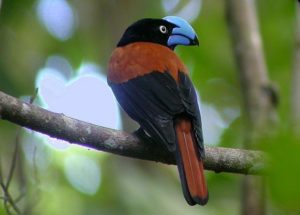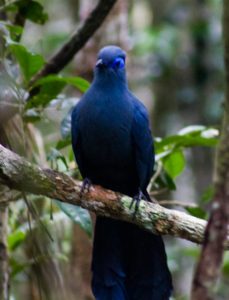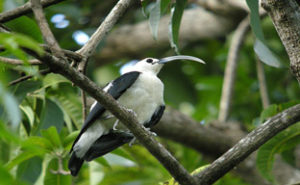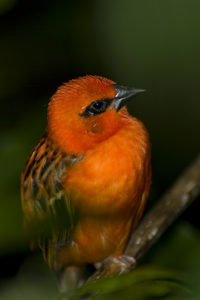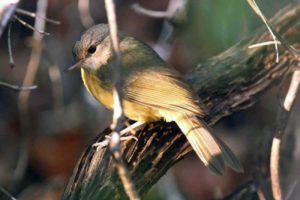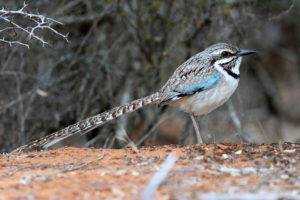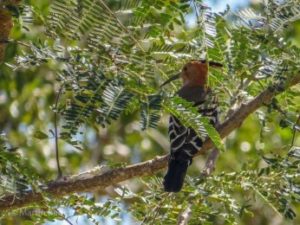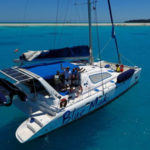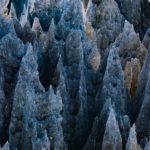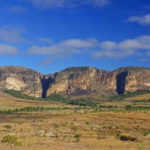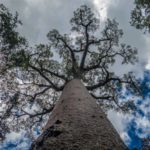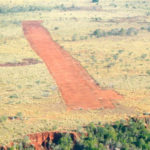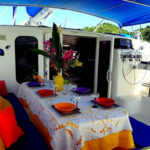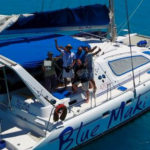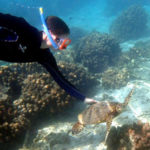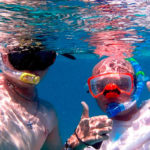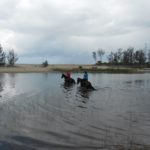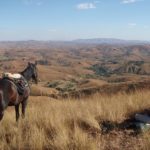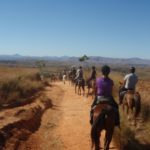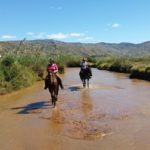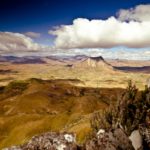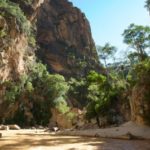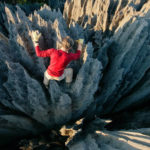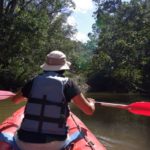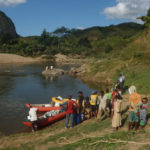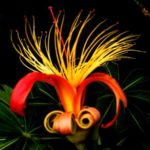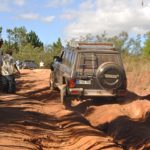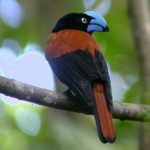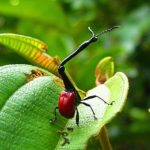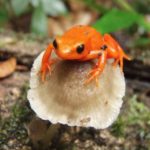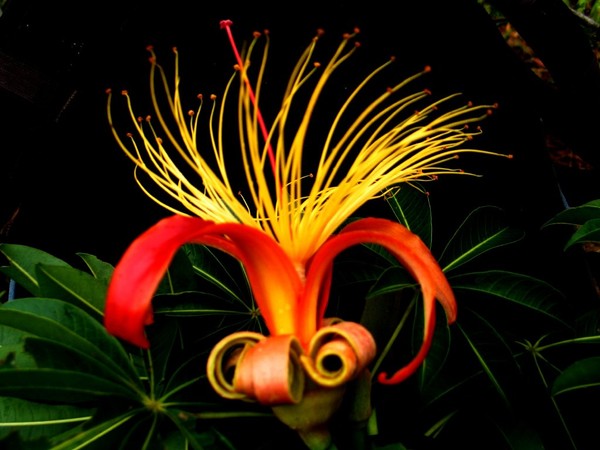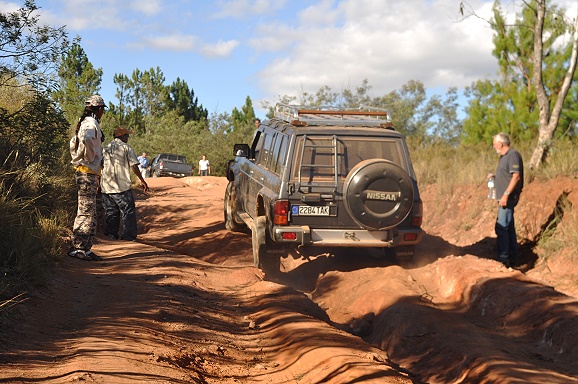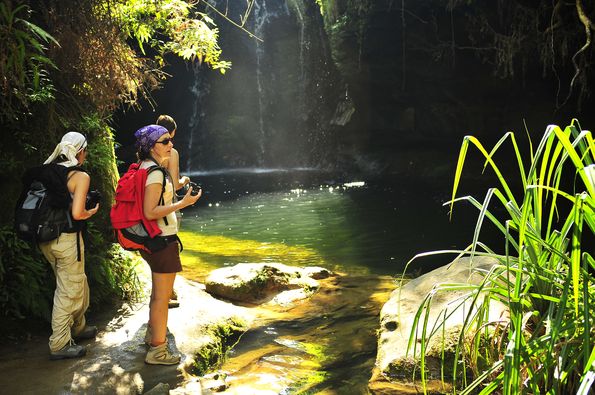Ornithological journey through Madagascar
Discover the world of birds
Birdwatchers and ornithologists will find a particularly broad playing field in Madagascar and can enjoy themselves to their heart's content. Just under 300 different species of birds have already been registered in Madagascar, and of these more than 100 species as endemic have been classified. Who Bird watching that cannot be found anywhere else on this planet, Madagascar is the place to be.
Since the world of birds in Madagascar offers so countless opportunities and discoveries, we have for some time a special ornithological journey through Madagascar added to our classic program. This trip is for all those who want an unforgettable look into the World of birds of Madagascar and who are quite willing to take the one or other strain on themselves for this. Madagascar's birds understandably prefer to live in areas that are sparsely populated by humans. With all our years of experience we have put together a tour that is full of highlights. In the following we would like to introduce you to the exact procedure and the different stations outline in a little more detail, so that you get a good impression of what you can expect for your money. If, following the explanations on ornithological Journey through Madagascar If you have any questions, please do not hesitate to contact us.
General information about ornithological trip
Even if these Journey through Madagascar primarily aims to discover and observe birds in their natural habitats, of course, various other animals will by no means remain permanently hidden. Especially with the Visiting the different national parks you will also receive, so to speak, as a small candy, numerous Reptiles and mammals run into each other.
Birds can best be seen in Madagascar observe from October to DecemberThey are quicker and easier to locate during this period. But even into March, the animals can be observed excellently. If you during the rainy season travel to Madagascar, it can happen, especially on the east coast of the country, that some areas are not accessible even with a four-wheel drive car. However, we already take care of possible alternatives during the planning of the trip, which is why you do not have to fear any major delays. We work with a fixed Team of guides and guides specialized in ornithology who not only know the hotspots for birders, but can also guide professional ornithologists to the best observation spots. Every now and then it will be necessary to hire a local guide in addition, but then again he will be not included in the price is. A detailed list of prices and services on this tour is presented at the end of these explanations. The tour as a whole is offered for 17 days laid out. Deviations and individual changes regarding the schedule are of course possible.
The concrete tour plan
In the following we would like to present the exact course of the tour outline for you a little better, so that you can get a very accurate idea of what you want to see on your Journey through Madagascar will expect. In fact smaller deviations sometimes necessary if, for example, the weather does not cooperate as expected. In this case, however, we already ensure a functional plan B from the very beginning.
Day 1: You reach Antananarivo
On the first day of your ornithological trip to Madagascar is basically only the arrival in the capital on the schedule. Normally, the planes from Europe land late in the evening or at night in Antananarivo, accordingly there is little time for activities on this day. We take care of the transfer and bring you afterwards in the nearby Hotel Villa Sibyl for the night under. If you still need something to eat or drink for this evening, we can gladly organize this for you, as long as you let us know your wishes in advance.
Day 2: You start from Antananarivo to Andasibe
On the second day of your ornithological Journey through Madagascar start straight through and head east on the RN 2 early in the morning. A first potential stop on the route is the private reserve Madagascar Exotiquewhich is led by a famous researcher. Lemurs, reptiles and amphibians meet you here and pose partly completely without shyness in front of your camera. Afterwards it goes on to Moramanga, where another stop is planned, for example to have lunch. After that, the four-wheel drive car will take you directly to the Analamazoatra area, where various nature reserves, reserves and national parks are waiting for you. The hotel Vakona Lodge will welcome you on this evening and will introduce you to a delicious dinner spoil yourself. Since the accommodation is located near the Andasibe National Park, it may be possible to make first bird observations.
More common birds: Centropus toulo Upupa marginata, Motacilla flaviventris, Foudia madagascariensis, Zosterops maderaspatanus-Ardeola Idae.
Rarely seen birds: Glareola ocularis and Falco eleonorae
Day 3: Excursion to Mantadia National Park
Not only the so-called winged words tell about the early birds that often catch the most worms. Also in reality it turns out that bird watching is most profitable if you start at an early hour. That is exactly why on the third day of the ornithological Journey through Madagascar also up early. First awaits you the Mantadia National Park, which is home to more than 100 different species of birds. Many of these birds are a important part of the ecosystem in Mantadia National Park and contribute to the survival of rare plants and animals in this rainforest. Besides the birds, you can also expect to see numerous species of reptiles and also various amphibians. The overnight stay takes place this evening again in the Hotel Vakona Lodge.
Common birds: Terpsiphone mutata, Mesitornis unicolor, Caprimulgus enarratus, Pycnonotus priocephalus, Oxylabes madagascariensis, Crossleyia xanthophrys, Philepitta castanea, Bradypterus brunneus (formerly Dromaeocercus brunneus), Foudia madagascariensis, Sarothrura insularis, Dryolimnas cuvieri.
Rarely seen birds: Euryceros prevostii, Xenopirostris polleni
Day 4: Excursion to Andasibe National Park
With the overnight stay in the hotel Vakona Lodge you will have numerous opportunities for bird watching tours during the day. Today you will travel to the Andasibe National Park, which is particularly popular with tourists for the Indri-Indris is known. This is indeed an extremely rare and endangered Lemur speciesBut also for bird lovers the Andasibe National Park has a lot to offer. At the various beautiful waterfalls in the park, on the trees and the clearings romp numerous unusual bird species, which are quite wonderful to watch before you return in the evening to the Vakona Lodge stop and spend the night.
Common birds : Coua reynaudii, Leptosomus discolor, Alectroenas madagascariensis, Zoonavena grandidieri, Neodrepanis hypoxantha, Bernieria madagascariensis, Xanthomixis zosterops.
Rarely seen birds: Mystacome de Crossley, Hypositte malgache, Bias de Ward
Day 5: The road takes you from Andasibe to Antsirabe
No bird watching is planned for the fifth day, as the Journey through Madagascar It now leads first further to the west and then to the south. It goes on the RN 7, which can be considered the most important main artery of Madagascar. The well-developed road leads from Madagascar's capital Antananarivo down to the Mozambique channelwhich borders the southernmost tip of the country. For you it goes first through the busy suburbs of Antananarivo and after a short time you can observe how the landscape around the changes. In Behenjy awaits you with the Au Coin Du Foie de Gras an excellent restaurant, which is known for its specialties even beyond the country's borders. After the short rest we go directly on, because Ambatolampy is already waiting for you. This city proves to be much more prosperous compared to other cities in Madagascar. This can be attributed, among other things, to the nearby Gold deposit but is also based on the fact that freight forwarding is strongly promoted in Ambatolampy. Aluminum processing is also big in this city: From all kinds of metal parts, workers in the foundries manage to extract aluminum for the production of their famous pots. If you wish, you can take a look at the adventurous workplaces of these people, however, you should be tough in view of the lack of occupational safety in every respect. The last stop on today's schedule is Antsirabe, a town about 170 kilometers south of Antananarivo. Many years ago, Antsirabe was already known for the especially mild and pleasant climate as well as for the healing springs existing there. Even today Antsirabe is for many people in Madagascar an exceedingly popular spa. The prosperous city presents itself accordingly in an almost European style and shows a regular development with numerous magnificent colonial villas. In Antsirabe, a visit to the local museum is a must. Gemstone market where numerous precious minerals can be purchased at reasonable prices. For the evening is the overnight stay in the hotel Chambres du Voyageur planned.
Day 6 and 7: Excursion to the impressive Ranomafana National Park
The Ranomafana National Park is considered to be one of the last intact Mountain Cloud Forests on this planet and takes you on the seventh and eighth day of this trip for itself. Early in the morning you go by car up the serpentines to the park entrance. Right now the lemurs in the forest are especially active and so the whole magic of this untouched and original spot on earth. To be able to leave especially early in the morning, breakfast is served directly in the park as a small Picnic at the viewpoint with the auspicious name Solitude taken. With a bit of luck you can already make the first bird observations. The individual tours through the Ranomafana National Park depend on your constitution and have to be discussed with the guide on site. Since the national park has such a large Abundance of different species of birds These cannot be listed in detail below. Overall more than 115 different bird species in Ranomafana National Park and about 30 percent of them can only be observed in this area. In addition, however, the view of twelve different species of lemurs, almost 100 different species of amphibians and the overnight stay in the pleasant and cozy Chez Gaspard.
Day 8: Continue to Isalo National Park
After the extensive and breathtaking bird watching in Ranomafana National Park, the ninth day of the trip is mostly devoted to the onward journey to the Isalo National Park. First, after breakfast, you will head by four-wheel drive car to Fianarantsoa, which is a bit back on the route you took a few days ago. You will now move through rice fields that shimmer pleasantly golden and warm in the sunlight. The ride continues South, with the landscape changing with every meter. More and more Granite rock appear and the lush vegetation gives way to a rather sparse grassland. Also the red Laterite floorsfor which Madagascar has earned the nickname of Red island has earned, are now becoming more frequent. After lunch is a short stop in the so-called Anja Park planned. This is a self-managed nature reserve, which was created by some villagers of the nearby area to actively create a Contribution to nature conservation in Madagascar. In this park you can find many different lemurs, but of course also some fascinating bird species. Beyond Anja Park, the landscape then becomes more and more barren and the central plateau is now clearly behind you. Around afternoon is the arrival at the famous Isalo National Park planned. This is considered the most famous of the entire island, which is why this one is also included in your ornithological Journey through Madagascar must necessarily be on the plan. The overnight stay on the ninth day is in the Isalo Rock Lodge 4**** scheduled.
Day 9: Isalo National Park welcomes you
On the tenth day the Isalo National Park quite welcome and meets you with all its fascinating secrets. Strange Granite and sandstone sculptures together with a exceptional flora and fauna are just waiting for you. From the outside, it may look as if Isalo National Park consists exclusively of dreary rock formations, some of which are already in the Jurassic Time have arisen. However, when you enter the national park, you will very quickly realize how many secrets there are to discover here. Numerous natural pools, waterfalls and lots of tropical nature will present themselves before your eyes and with them the different species of birds that inhabit this area. Also in the Isalo National Park you can decide the concrete course of the tour on Your individual needs and your physical constitution. In principle, however, we can assure that the Hiking in the mountain massif is not particularly difficult. Only the heat makes some tourists now and then something to create. Also today the overnight stay takes place in the already known Isalo Rock Lodge.
Day 10: Zombitse National Park and the onward journey to Ifaty
On the eleventh day you will have both Birdwatching as well as the onward journey by car before. The way leads you in the four-wheel drive car even further south and the savannah as well as the desert climate accompany you now. Only a few rainy days a year wet the ground in this area and still the native flora and fauna optimally adapted. This is particularly evident in a national park that suddenly appears like a mirage in the middle of the desert landscape. Yet this national park is of particular importance for birdwatchers. Around 47 percent of Madagascar's native birds are in the Zombitse National Park at home. The Bernieria apperti is found only here on the whole island and also very rare lemurs can be discovered here. After the visit of the national park we continue Direction Tulearwhere especially the botanists get their money's worth. Baobabs, euphorbias and many other plant species have adapted in a unique way to the prevailing climatic conditions and provide numerous Opportunities for individual studies or simply spectacular photo motifs. Also impressive are the Tombs of the Mahafalythat rise from the ground to the right and left of the road you are driving on. In Tulear you should then make a stop and enjoy the special Coastal city flair before it carries you further to Ifaty. There the hotel awaits you Belle Vuewhich is located near the beach and accordingly tempts to an evening walk by the surf of the sea.
Day 11: You explore Ifaty and the surrounding area
The twelfth day is half bird watching and the other half at your leisure. In the morning half you will leave as early as possible and visit the thorn forest near Ifaty. There grow around 400 Baobabs up and some of them have already been proven to be more than 1,000 years old. This fact alone gives the thorn forest a whole special atmosphere. Various succulents are also distributed on the ground, so that the Terrain difficult to access is. For the numerous birds that breed in this area, this proves to be an additional protective function. Many of the birds living here are endemic and can be observed optimally. In the afternoon we can then recommend a little Relaxation on the beach to search, maybe do a little snorkeling or diving. If you want and are in the area at the right time of year, you can at July and in August additionally the Humpback whales observe off the coast. If you need further information, we would be happy to hear from you. Also today you may go to the hotel near the beach in the evening. Belle Vue turn in.
Commonly encountered birds: Xenopirostris xenopirostris, Falculea palliata, Newtonia archboldi, Nesillas typica
Rarely seen birds: Monias benschi, Uratelornis chimaera
Day 12: It goes on to Anakao
Today you will leave Ifaty and head back to Tulear via the dusty dirt road. There you will first have time for a small city tourbefore you take the boat to Aanakao. An all-terrain vehicle will then take you on to the Relais d`Ambolawhere the beach of the same name, undoubtedly one of the most beautiful on the whole island, is already waiting for you.
Day 13: Tsimanampesotse National Park awaits you
Today you can expect a very special highlight, because one of the oldest and at the same time also the least known national parks on Madagascar awaits you: the Tsimanampesotse National Park. Up to 90 percent of the animals and plants living here can only be found in Madagascar and the Tsimanampesotse National Park was already founded in 1927. On the more than 40,000 hectares live more than 112 different bird species and incidentally some lemurs as well as about 39 different reptile species. In addition, the Tsimanampesotse National Park is home to a huge limestone plateau as well as a beautifully situated lake. The overnight stay takes place after an extensive day with numerous bird observations again in the Relais d`Ambola.
Commonly encountered birds: Calicalicus rufocarpalis, Xenopirostris xenopirostris, flamingos.
Rarely seen birds: Newtonia archboldi
Day 14: Going back to Antananarivo
On the 15th day your tour is already coming to an end and the first stage of the journey home is on the schedule. With a national Flight from Tulear you will go to Antananarivo. Depending on when the plane lands in the capital, you can on request still a sightseeing tour perform.
Day 15: The capital Antananarivo awaits you
On the last day of your trip you can enjoy the Antananarivo city with its very special flair once again explore extensively. Set out on a tour of the city or drive to the nearby Lemurs Parkwhere you can once again experience the extraordinary inhabitants of Madagascar up close. At the end there is once again a delicious meal in one of the renowned restaurants of Antananarivo before starting the transfer to the airport.
Day 16: You travel back to Europe
The last day of your trip is reserved exclusively for the return flight, which will take you to where you are expected next.
Facts and figures about the trip
The above presented ornithological journey is basically for a Flexible number of people bookable and will be organized by us very gladly with consideration of your special preferences. Below we offer you, on the one hand, a clear price list, from which you can Cost of the trip per person without any flight transfers can take from it. In addition, we list below the table once again all the services that you can expect during your trip. Should you be interested in this ornithological journey through Madagascar have interest or additional information about the itinerary as well as the Birds to be observed on the island we will be happy to assist you with our knowledge.
| Ornithological trip - 16 days | Price per person |
| 2 to 3 guests | 3150 € |
| 4 guests | 2990 € |
| 5 to 8 guests | 2850 € |
| 9 to 12 guests | 2750 € |
| 12 guests and more | 2590 € |
For single rooms we have to charge a surcharge of 490,00 Euro.
Services included in the basic price:
- Off-road vehicle including diesel and driver
- Accommodation (as indicated)
- Breakfast and dinner (as indicated)
- Entrance to the listed national parks
- Tour guide (German or English)
- Costs for meals and accommodation of the accompanying person
- Car insurance and taxes
- Transfers
Services not included in the basic price:
- Tips
- Payment of the local guides in the national parks
- Drinks
- Airline tickets
- Lunch
- individual activities
- personal expenses
Trip description for download
[wpfd_single_file id="10860″ catid="548″ name="Ornithological Journey through Madagascar"]

